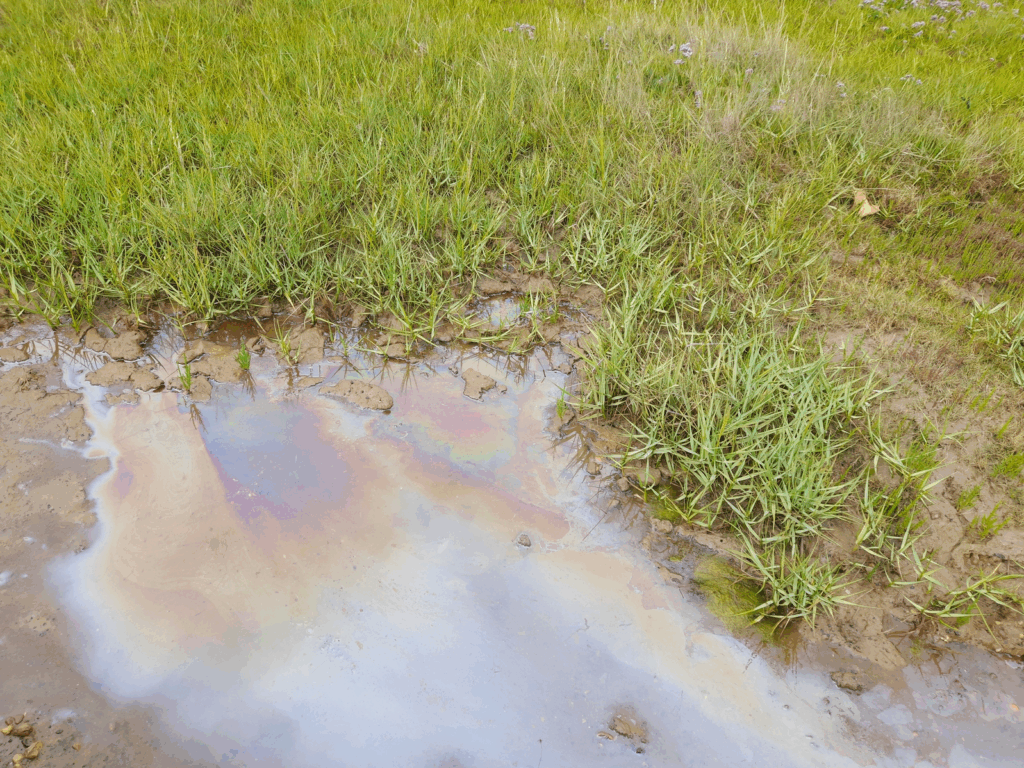If you think your oil tank might be leaking, it’s important to take the right precautions, as the situation can quickly become dangerous. Even if you think it is unlikely, taking quick action is worth it to prevent oil spills that can cause environmental contamination and health hazards to humans and wildlife.
Sometimes, it’s not clear whether your oil tank is leaking. This article will explain how to tell if your oil tank is leaking, so you can get confirmation and take action. We’ll explain why a leaking oil tank is dangerous and provide guidance on how to resolve the situation. We’ll also offer some maintenance tips to prevent the problem from occurring in the first place.
How to tell if your oil tank is leaking
You might have your suspicions, and you’re desperate to get some confirmation. Fortunately, there are some obvious symptoms you can look out for. These include damp spots, strong fuel odours, unexplained drops in oil levels, and some visible oil stains around the area.

- Damp spots: These are often the first signs of a leaking oil tank. A damp spot usually appears at the bottom of your oil tank or on the underside of the tank. As time moves on, oil usually travels up the side of the tank.
- Strong fuel odours: It’s good to be vigilant around your oil tank. If there’s a fuel odour, it could be a sign of a leak.
- Unexplained drops in oil levels: Monitoring your oil tank levels is always important. If the levels have dropped quicker than you’d normally expect, then it’s a good indication that you have a leak. It’s helpful to fit a gauge on your tank to help make this as clear as possible.
- Visible stains around the tank: It’s good to check around the tank to see if you notice any oil accumulation. There may be some stains on the surrounding platform. In some cases, you may need to monitor the soil.
Is a leaking oil tank dangerous?
Yes, a leaking oil tank is dangerous to yourself and the surrounding environment. There are clear heating oil tank regulations for both homes and businesses on the UK Government website. There are severe penalties in place for non-compliance, making it a costly problem.
Knowing how to tell if your oil tank is leaking is only the first step. Once you find out there is a leak, you need to take action as soon as possible. If there is something you can do, you should stop the oil from spreading. It’s recommended to seek help from the Environment Agency to help clean up the oil spill.
Once the professional arrives, they will identify the source of the leak and determine the extent of the damage. Depending on the volume of oil, they will bring in a professional crew to clean up the spill and safely remove it. If the oil spill is large enough, they may contact regulatory agencies.
Once the leak has been dealt with, there are some subsequent steps to take. This includes contacting the insurance company. They may cover some of the cleanup and repair costs depending on the specific circumstances. You should also take pictures and videos to help document the situation.
Risks relating to an oil tank leak
Oil leaks can pose a serious risk to the environment and the safety of your home. If the oil runs into the surrounding soil and groundwater, it can cause long-term environmental damage that is very difficult to reverse. This can cause problems for the surrounding vegetation and wildlife.
Oil leaks increase the risk of fires and explosions. You should take extra care if the tank is located near an ignition source. The fumes from the oil can sometimes cause respiratory problems and skin irritation.
Preventing an oil leak
Oil tank owners should do everything possible to prevent oil leaks in the first place. Although there’s always a risk of an oil leak, there are several preventative measures to help reduce the chances of a spill. These include:
- Scheduling regular tank inspections: You should have your oil tank inspected by a qualified technician at least once a year. This should help identify issues early.
- Considering a bunded tank: This type of tank has two walls. The oil is stored in the inner tank, and the outer tank acts as a protective layer.
- Monitoring your tank gauge: Keep an eye on your fuel tank levels regularly, as this will help you identify any spills quickly.
Now you’ve worked out how to tell if your oil tank is leaking, you might need to buy a new tank. We have a range of heating oil tanks available on our online store. If you need any advice on choosing the right oil tank for you, our friendly team is on hand and ready to help. Just get in touch.

